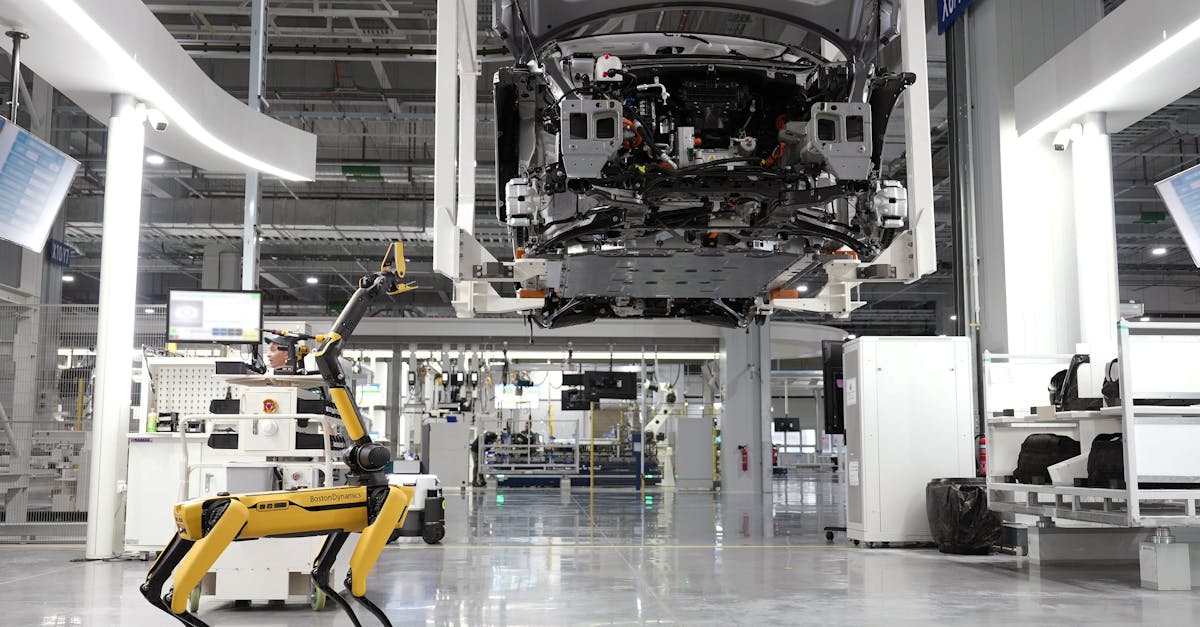The Role of Corporate Culture in Driving Industrial Innovation
Introduction
Corporate culture plays a pivotal role in shaping the landscape of industrial innovation. Defined by a company's values, beliefs, and behaviors, it forms the essence of an organization's identity and operational ethos. Today, in a competitive global marketplace, industrial innovation is vital for companies aiming to adapt, thrive, and lead. A strong corporate culture can ignite creativity, streamline collaboration, and motivate groundbreaking solutions. But how does it specifically contribute to innovation within industries? Exploring this dynamic relationship reveals insightful strategies and practices employed by industry leaders to drive sustainable growth.
Advertisement
Defining Corporate Culture
Corporate culture encompasses the shared values, attitudes, standards, and rituals that characterize an organization. It is the collective personality of the company shaped by its mission, vision, leadership, and internal communications. When a company clearly articulates its culture, it provides its employees with a sense of identity and unity, fostering an environment where innovation can flourish. Without a coherent culture, innovation often lacks direction and meaning, leading to disjointed efforts that fail to achieve strategic objectives.
Advertisement
The Power of an Innovative Mindset
An innovative mindset within corporate culture empowers employees at every level to think creatively and challenge the status quo. Organizations that encourage risk-taking and tolerate failure create a fertile ground for novel ideas. Leading companies like Google and Tesla have implemented programs to nurture and harness this spirit, fostering an environmental framework where ideas can blossom without the fear of immediate repercussions. Over time, such an innovative mindset becomes embedded into the company's culture, spurring ongoing industrial innovation.
Advertisement
Collaborative Environments Enhance Innovation
Inherent in corporate culture is the emphasis on collaboration and teamwork. Innovation is rarely the result of a single individual's efforts but rather the outcome of diverse minds working together. Cultivating a collaborative environment means breaking down silos and encouraging cross-functional interaction. Through open communication, knowledge sharing, and diverse team compositions, innovative solutions emerge, drawing on the strengths and expertise of each member. This collaborative synergy enables the pooling of ideas and resources, maximizing industrial innovation.
Advertisement
Leadership's Role in Promoting Innovation
Effective leadership is crucial in embedding a culture of innovation within an organization. Leaders set the tone and communicate the importance of innovation through their actions and policies. They are expected to be both visionaries and facilitators, championing innovative initiatives and empowering teams to explore new ideas. By fostering an open-minded, supportive, and resilient atmosphere, leaders not only drive industrial innovation but also ensure its alignment with the company's strategic goals and values.
Advertisement
Constructive Feedback and Continuous Learning
An open feedback loop within corporate culture fosters continuous improvement and innovation. Constructive feedback empowers employees to refine ideas and processes, ensuring alignment with organizational goals. Additionally, a culture of learning encourages employees to enhance skills and knowledge, staying abreast of industry developments. Companies that prioritize professional growth offer workshops, training programs, and mentorship, nurturing a culture that constantly evolves and adapts, driving industrial innovation.
Advertisement
Diversity and Inclusion as Innovation Catalysts
Diverse and inclusive corporate cultures are often the breeding ground for innovation. Different perspectives, experiences, and backgrounds spark creativity and fuel problem-solving. Inclusive companies actively seek and value varied ideas, understanding that diverse teams can generate more innovative solutions. By promoting diversity, organizations tap into a broad spectrum of insights, resulting in products and services that resonate with wider audiences, a key ingredient for successful industrial innovation.
Advertisement
Technology Embraces Innovation
Corporate culture that embraces and adapts to technological advancements stands at the forefront of industrial innovation. Tech-savvy cultures encourage the use of digital tools and platforms to streamline processes, enhance communication, and optimize operations. By integrating technology into everyday practices, companies not only increase efficiency but also identify new opportunities for innovation. Forward-thinking organizations leverage data analytics, artificial intelligence, and automation to innovate and remain competitive in an ever-evolving industrial landscape.
Advertisement
Challenges in Building an Innovative Culture
Despite the benefits of a strong corporate culture, companies may face challenges in cultivating a culture of innovation. Resistance to change, inflexible structures, and a lack of clear vision can impede efforts to innovate. It requires intentional effort, from reevaluating organizational structures to offering incentives for inventive ideas, to overcome these barriers. The transformation may be taxing, yet the rewards—a thriving, innovative organization—are invaluable in driving industrial innovation and long-term success.
Advertisement
Conclusion
Corporate culture is undeniably integral to driving industrial innovation. By cultivating an environment that encourages creativity, collaboration, and diversity while promoting continuous learning and leveraging technology, organizations can achieve remarkable innovation. From leadership roles to inclusivity and embracing change, every aspect of corporate culture can contribute to ongoing growth and development. As companies evolve within this context, their capability to innovate becomes a defining feature of their success, enabling them to not just compete, but thrive on a global stage.
Advertisement








